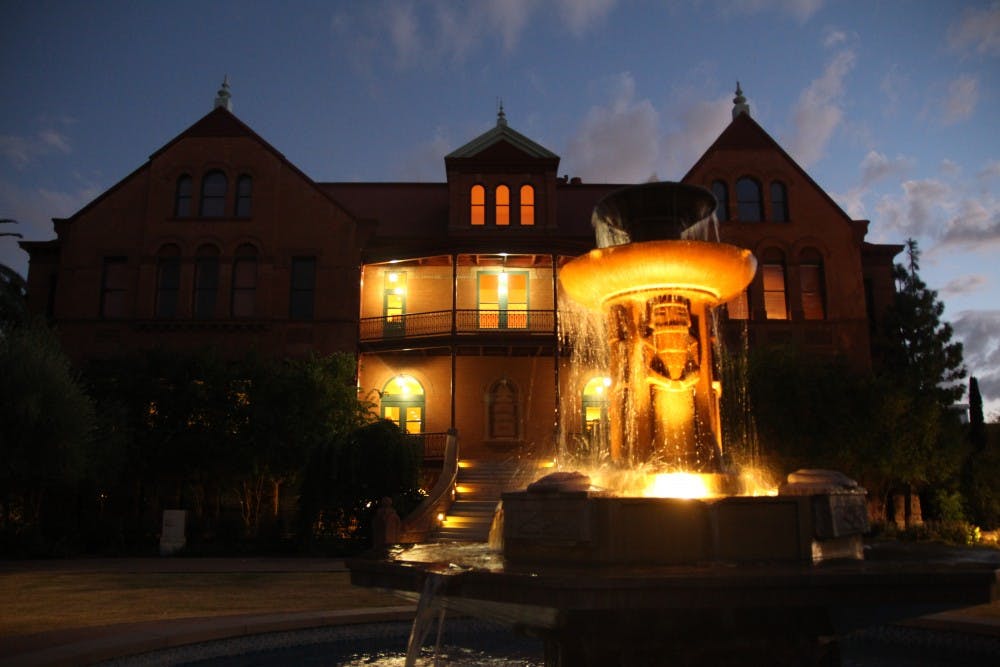Walking around campus, students are often too busy looking at their phones, talking to their friends or maneuvering around the dreaded walk-only zones to look at the buildings they enter every day. Thousands of students go in and out of these buildings each day, but many don’t know who those people are or why their names resulted in a permanent landmark on their campus.
The Lattie Coor Hall is named after Lattie F. Coor, the 15th president of ASU. Coor later served as president of the University of Vermont. During his time at ASU, Coor created the “Four Pillars” on the university’s agenda; including undergraduate education, research, cultural diversity and economic development. He transformed ASU into a research institution and introduced the creation of the Polytechnic campus. The Lattie Coor Hall was built in 2004, two years after Coor retired as president.
The Grady Gammage Memorial Auditorium, which opened in 1964, was named for Dr. Grady Gammage. He was president of ASU from 1933 to 1959 -- time in which the name of the institution was changed from Arizona State College to Arizona State University.
The building is also one of the last works of revered architect Frank Lloyd Wright. In 1985, the auditorium was placed on the National Register of Historic Places, deeming it a building that should be safeguarded.
The John W. Schwada Classroom Office Building was constructed in 1995 in honor of the 13th president of ASU. During Schwada’s tenure as president, ASU joined the PAC-10 Conference and ASU granted more degrees than ever before. Additionally, many new buildings were constructed on campus and the College of Public Programs was established. Schwada retired in 1981 and passed away in 1990.
Neeb Hall is one of the biggest lecture halls located on the Tempe campus and is named after Professor Lewis S. Neeb. He was head of the department of industrial arts during the 1930s and was president of the Tempe Chamber of Commerce. He served as the first varsity football coach for Tempe High School, and also created the lighted star and camels that line A Mountain during the Holiday Season.
The Daniel Noble Science and Engineering Library opened in 1983 and contains countless works regarding engineering, science and geography as well as a tutoring center. The library is named for engineer and innovator Daniel E. Noble, who worked at Motorola for more than 30 years and is renowned for designing the nation’s first statewide two-way FM radio communication system. Noble received the Edison Medal in 1978 from the Institute of Electrical and Electronics Engineers.
The Charles Trumbull Hayden Library is the main library on the Tempe campus and is named for the founder of Tempe, Charles Hayden. A businessman and probate judge, Hayden, also served as the first president of the board of the Arizona Territorial Normal School, another of ASU's past names. Hayden was a strong advocate for education and helped raise money for the school. The Charles T. Hayden House and the Hayden Flour Mill are also named after him, which eventually led to the naming of Mill Avenue.
Additionally, many of the colleges at ASU are named for historical figures. Ira A. Fulton, a philanthropist and businessman is the founder of Fulton Homes and a great benefactor of the engineering school at ASU. Fulton also donated to the College of Engineering and Technology at Brigham Young University. Additionally, the Mary Lou Fulton College of education is named for his wife, who passed away on Oct.1.
The Cronkite School of Journalism is aptly named after Walter Cronkite, a broadcast journalist who is most notable for his CBS evening news in the 1960s and 1970s.
Sandra Day O’Connor College of Law is named for the first female Supreme Court justice who also served as an elected official and judge in Arizona. O’Connor was also the first female majority leader in the U.S. on the Arizona Senate.







